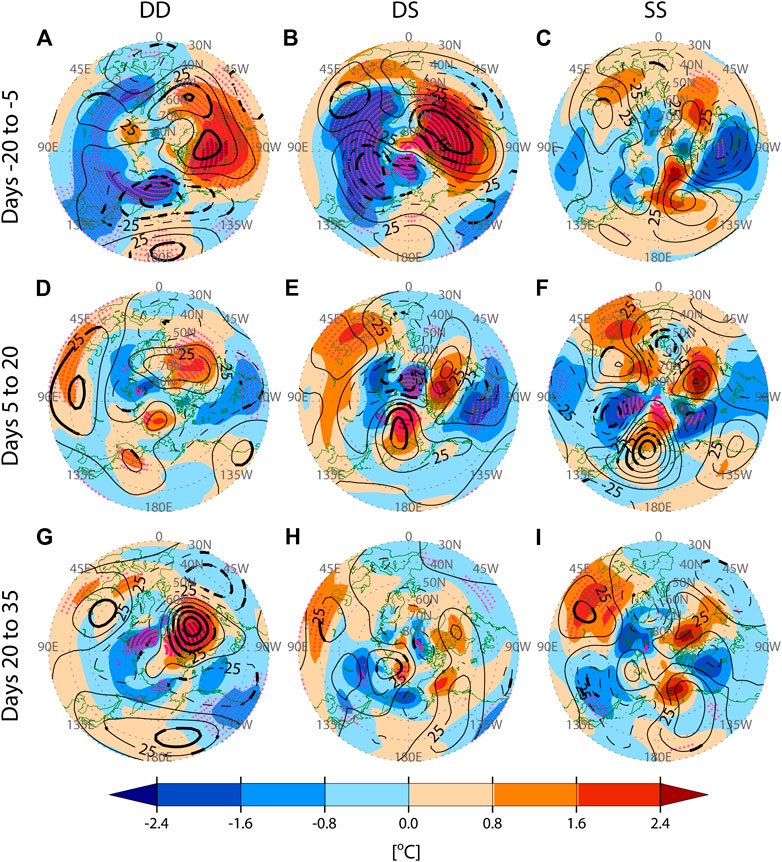Stratospheric Warming – Have you ever heard of a weather event that can cause dramatic shifts in temperatures high above the Earth’s surface, potentially impacting our weather down here?
That’s exactly what a Sudden Stratospheric Warming (SSW) is. This phenomenon, while occurring high in the atmosphere, can have surprising knock-on effects for us on the ground.
This article delves into the world of SSWs, explaining what they are, how they occur, and the potential consequences they might have for our weather patterns.
Up, Up, and Away: The Stratosphere Explained
Before understanding SSWs, let’s get acquainted with the stratosphere. Our planet’s atmosphere is layered, with each layer having distinct temperature and pressure characteristics.

The layer directly above the troposphere (where most weather events occur) is the stratosphere, extending roughly from 10 kilometers (6 miles) to 50 kilometers (31 miles) above the Earth’s surface.
Unlike the troposphere, which generally gets colder as altitude increases, the stratosphere exhibits a fascinating temperature reversal. In the lower stratosphere, temperatures remain relatively constant.
However, as you move higher, temperatures begin to increase due to the absorption of ultraviolet (UV) radiation by ozone. This makes the stratosphere much colder at the bottom than at the top – the opposite of what happens in the troposphere.
The Polar Vortex: A Chilled Resident of the Stratosphere
Within the stratosphere resides a swirling mass of cold air called the polar vortex. This vortex typically sits above the Arctic region and spins westward (counter-clockwise in the Northern Hemisphere). The polar vortex acts as a kind of confinement zone, keeping the very cold air trapped around the poles.
However, the stability of the polar vortex can be disrupted by events happening down below in the troposphere.
The Culprit: Planetary Waves and a Wavy Intrusion
Planetary waves are large-scale atmospheric waves that travel from the troposphere upwards, sometimes reaching the stratosphere. These waves can act like a battering ram, pushing on the polar vortex and disrupting its normal westward flow.
In an SSW event, these planetary waves become particularly strong and persistent. They transfer significant amounts of energy and momentum upwards, causing the normally strong westerly winds within the polar vortex to slow down or even reverse direction. This reversal, from westerly to easterly winds, is a hallmark of a Sudden Stratospheric Warming.
A Sudden Warming? But Isn’t That Good?
The term “warming” in a sudden stratospheric warming might seem counterintuitive. After all, wouldn’t warming be a good thing?
Here’s the key point: the warming doesn’t occur in the troposphere, where we experience weather. Instead, it happens high up in the stratosphere, where the cold air gets replaced by warmer air from lower latitudes.
While the stratospheric temperatures may increase dramatically (by up to 50°C or 90°F) over a short period (a few days), it doesn’t translate to a direct warming effect down below.
The Downward Cascade: How SSWs Can Impact Our Weather
While the initial warming happens in the stratosphere, the effects of an SSW can eventually cascade down to the troposphere, influencing our weather patterns.

The weakened and sometimes reversed polar vortex can wobble and even split, allowing the cold air trapped within to leak outwards towards lower latitudes.
This southward movement of cold air can disrupt the jet stream, a high-altitude belt of strong winds that steers weather systems around the globe. A disrupted jet stream can lead to:
Shifts in temperature: Colder air outbreaks can reach regions that typically experience milder winters, while some areas might experience warmer than usual conditions. These shifts can be significant, with temperatures dropping or rising several degrees Celsius compared to historical averages.
Changes in precipitation patterns: Shifts in the jet stream can influence where storms track and how much precipitation falls in different regions. For example, a disrupted jet stream might bring more frequent and intense storms to some areas, while others experience drier conditions.
More extreme weather events: A disrupted jet stream can lead to a more meandering pattern, allowing weather systems to stall and potentially causing extreme weather events like heat waves, cold snaps, or heavy snowfall.

For instance, a persistent ridge in the jet stream over a region can lead to prolonged heatwaves and drought conditions.
FAQs
What is Sudden Stratospheric Warming?
Imagine the Earth wrapped in a layered blanket. The stratosphere is the layer above the troposphere (where our weather happens) stretching from about 6 to 31 miles high. SSW is a dramatic event in this upper layer where temperatures can rise by a whopping 50°C (90°F) in just a few days! This is because strong winds encircling the pole (the polar vortex) weaken or even reverse direction, causing cold air to sink and warm rapidly.
How Often Does This Happen?
SSW events occur about six times per decade in the northern hemisphere, and much less frequently (once every 20-30 years) in the southern hemisphere.
Does SSW Affect My Weather?
Not directly. But SSW can disrupt the high-altitude jet stream, a band of fast-moving winds that influences weather patterns below. Weeks after an SSW, some regions in the mid-latitudes (like Europe and North America) might experience colder or more extreme weather. However, the exact impacts can vary and aren’t guaranteed.
What are the Signs of SSW?
Since SSW happens high up, we can’t feel the warmth directly. Scientists monitor the stratosphere for signs of weakening winds and rising temperatures. These observations help predict potential effects on the jet stream and future weather patterns.
Can We Predict SSW Events?
Scientists are getting better at forecasting SSWs, but it’s still a complex process. Advance warning can help weather services prepare for potential changes in weather patterns.
However, it’s important to note that not every SSW leads to significant impacts on our weather. The strength and duration of the warming, as well as the prevailing atmospheric conditions, all play a role in determining the extent of the downward influence.
Some SSWs might cause only subtle changes, while others can trigger more dramatic shifts in weather patterns.
To read more, Click Here